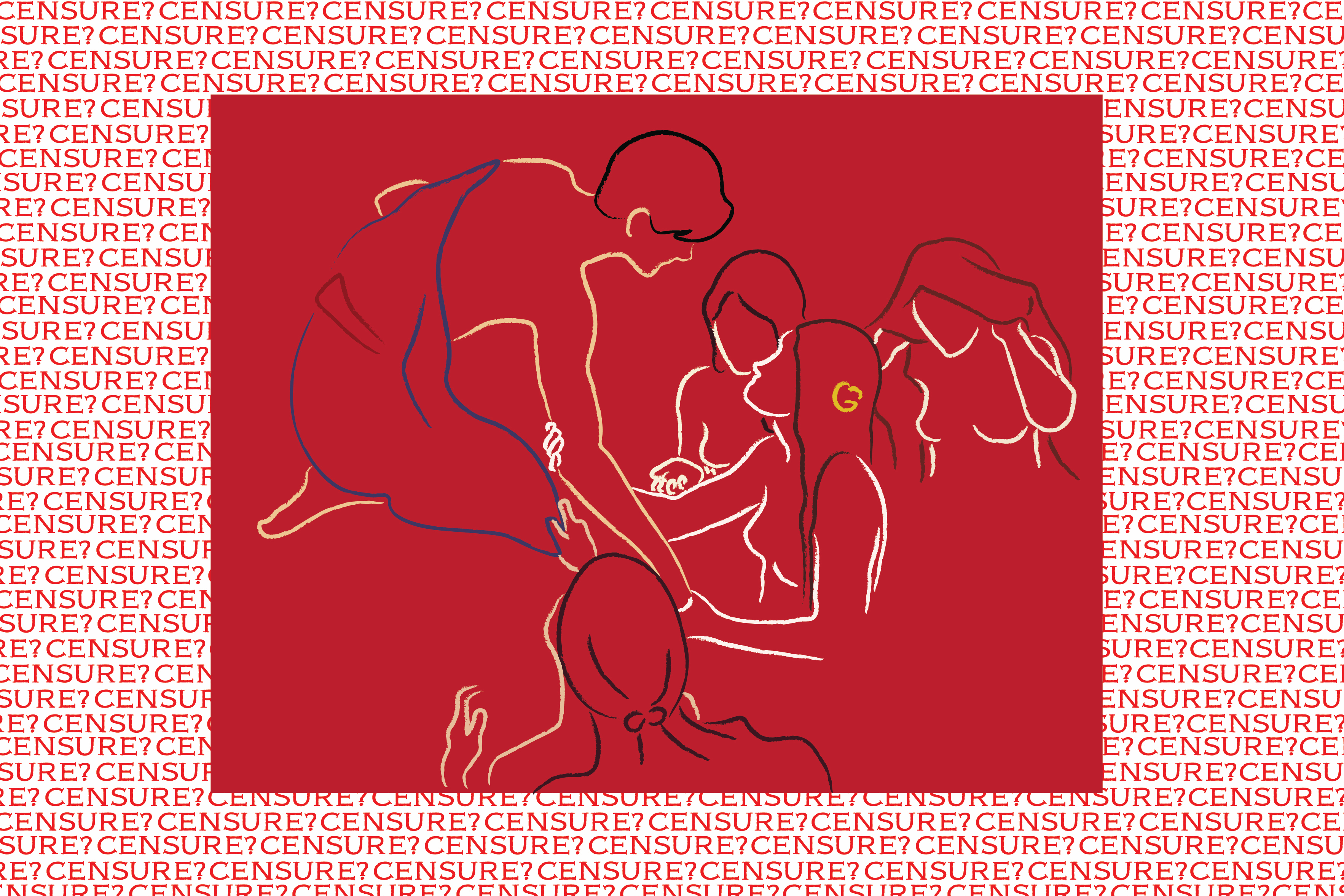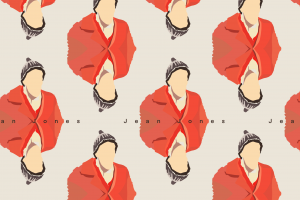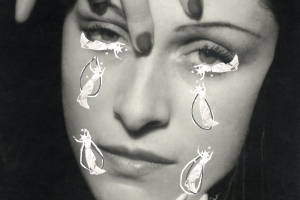
Manchester, the Met, and #MeToo
by Emilia Cieslak | November 21, 2019
Just as #MeToo was gaining mainstream attention in late 2017, a petition was launched to remove one of Balthus’ most iconic portraits. The painting, Thérèse Dreaming (1938), depicts a young girl sitting with her underwear and groin area deliberately exposed. Her white underwear contrasts with the relatively muted colour palette of the rest of the painting and is surrounded by the vivid red of her skirt lining. It deliberately attracts your attention. Thérèse seems oblivious to the spectator, facing away with her eyes closed in an ambiguous expression of boredom, perhaps, or even of ecstasy. Interpretations vary, but few attempt to deny the unsettling quality of the painting. Thérèse Blanchard was eleven years old when she first modeled for Balthus, a respected Modernist painter. Little is known about her life (until recently even her date of birth was unknown), or the circumstances which led her to pose for ten portraits by Balthus over a period of three years. When she died aged 25, the cause of her death remained unpublished and her life became forever defined by Balthus’ portraits.
Thérèse Dreaming had an unsettling effect on Mia Merrill, a New York resident whose visit to the New York Metinspired her to start the petition. When explaining why she started the petition, Merrill wrote: “I was shocked to see a painting that depicts a young girl in a sexually suggestive pose… it is disturbing that the Met would proudly display such an image.” She argued that the Met couldn’t get away with acting coy: in a previous exhibition of Balthus’ work, they had displayed signs at the entrance indicating that “some of the paintings in this exhibition may be disturbing to some visitors.” By putting up the signs, the Met acknowledged the sexual charge inherent in these paintings of prepubescent girls. The petition called for the painting to be removed or for the gallery to put up a notice warning viewers about, in Merrill’s words, “Balthus’ artistic infatuation with young girls.”
Only two months after the Balthus petition, Manchester Art Gallery made national headlines when a group of gallery staff decided to temporarily remove John William Waterhouse’s Hylas and the Nymphs (1896). This was not a reactionary decision, but part of a commission by celebrated artist Sonia Boyce which included a ‘Gallery Takeover’ – a project which involved engaging with paintings from the gallery’s permanent collection by moving artworks around and even inviting performance artists to improvise and react to the paintings. Hylas and the Nymphs is one of the most famous paintings in the collection, it depicts several young nude nymphs luring Hylas to his doom. According to Boyce, a nymph is “a mythical being who happens to be a female – and a nymphomaniac.” The models used for this painting were on the cusp of adolescence, prompting Boyce to ask: “Why is a nymphomaniac linked to a prepubescent girl who isn’t quite human? What is our contemporary relationship to that?” This was the question raised to the public who were invited to fill the empty space with reactions written on Post-its and to comment on their feelings towards the painting and their reaction to it not being on the wall.
The media reaction to both incidents was predictable, as many art critics and journalists warned that the removal of either piece would be an act of censorship. There was criticism from journalists at newspapers including The Guardian and the New York Review of Books that the debate about the appropriateness of displaying the paintings was excessively moralistic, and that it should be possible to enjoy a painting aesthetically without endorsing its moral values. Many commentators argued that if we start judging paintings solely on their moral content, most galleries would now be empty. Significantly, when the decision to take down Hylas and the Nymphs was first reported on, most journalists did not mention the context of the ‘Gallery Takeover’ or the fact that the removal of the painting was never intended to be permanent. It was also not mentioned that during the Gallery Takeover, the gallery hosted events inviting the public to meet Boyce and consult on the upcoming event. Due to the high volume of complaints after the negative media coverage (some of which hyperbolically compared the gallery team to iconoclasts and fascists), the project was suspended and the painting was back on display in a week.
Yet many writers responding to the controversy overlooked some of the most interesting questions raised: in a post-#MeToo world, should we be more conscientious when approaching the issue of the artistic and cultural representation of girls and women? Do galleries and arts institutes have a role to play in #MeToo? And who decides what a positive representation of the feminine even is?
In our interview, Clare Gannaway, curator of Contemporary Art and Manchester Art Gallery, made it clear that she found the media coverage frustrating, because it failed to take into account the context and intention of the removal of Hylas and the Nymphs. The claim of censorship in particular functioned as a way to “shut down all of the nuance, all the incredibly complex stuff that [they] had been talking about…It became a story about a curator (i.e. [Gannaway]), making a decision to remove a painting because [she] just didn’t like it.” The claim that the removal was a form of censorship seems disingenuous. Censorship aims to shut down politically inconvenient voices and stifle discussion about uncomfortable topics. The removal of the painting in the context of the Gallery Takeover, as disruptive as it was, was about starting conversations about the very socially and politically controversial topic of how women are represented in the art world and wider society.
Secondly, according to Gannaway, it was never about looking at the painting in isolation: “it’s the context, it’s the interpretation, it’s how we talk about those works.” Indeed, Hylas and the Nymphs had been hanging in an awkwardly named gallery (In Pursuit of Beauty), which was full of paintings of nude women and nubile young girls. In Gannaway’s words, the Gallery Takeover aimed to “challenge the story that this whole context was telling” and gather new interpretations by encouraging people to record their reactions. While some would still argue that the gallery team’s decision amounts to an act of censorship, she responds: “Well, isn’t that what curators do? They make decisions about what to have on the walls and what not to have on the walls.” This process of curating is not about censorship – in our interview, she kept emphasising the idea of “opening up more stories.” The vision of femininity shown in the painting and the In Pursuit of Beauty gallery was by this point a well-worn narrative – by taking the painting off the wall, Gannaway and her team wanted to create a space for new visions and narratives of femininity to take centre stage. The process was not about erasing the old, but allowing new ideas to be represented.
The idea of which stories are represented was also important to Lauren Elkin, who wrote one of the more thoughtful responses to the Balthus petition. Perhaps surprisingly, she defended Balthus’ representation of Thérèse. To Elkin, Balthus captures the uncertain, half-known sexual feelings of a child gradually approaching adolescence. In a society which frequently downplays and suppresses female sexuality, this painting presents an aspect of femininity which makes many people deeply uncomfortable, and gives us a rare insight into the sexually developing mind of a young girl. Elkin’s redoubtable closing argument is this: “If we only see abuse when we look at the painting, then, somehow, the abusers have won; the men have won; art history is His Story, same as it ever was.”
Her interpretation is a tempting one to adopt, because it means that Thérèse is able to take back a little bit of power from an artistic tradition which is known for privileging the male perspective. Critics defending Balthus argue that young women depicted by the artist are often characterised by their introspection and self-involvement. They don’t seem to be performing for anyone’s gaze. Indeed, Balthus always denied that he ever intended his representations of these young sitters to be “paedophilic.” Whatever his intent was, it is clear that they are representations of a young girls coming of age as constructed, curated, and admired by an older man. Placing the model in a naturalistic pose (lots of children sit cross-legged or limbs akimbo), yet in a stark, empty space, creates a certain tension. The character in the painting may not realise that she is being observed, yet we the viewers are nonetheless looking on. And then there’s the little kitten at Thérèse’s feet. Cats are an ongoing motif across decades of Balthus’ works, from his juvenilia (a series of ink drawings dedicated to his pet cat Mitsou) to his 1935 self-portrait in which he styles himself as HM The King of Cats. The feline motif has been interpreted by some as a way in which Balthus inserted himself into the portraits; the girls seem to be alone, but Balthus-as-cat is always watching.
The debate in New York touched on many of the issues faced by Gannaway’s team in Manchester. In our interview, Gannaway speculated that the reason why “Nymph-gate”, as the gallery staff now refer to the incident, provoked such strong feelings was the resistance to re-evaluating art which is considered a “gallery highlight”, and a “classic.” Yet, re-evaluation is inevitable. As much as people try to separate art from politics and morality, Gannaway is adamant that the art world in which she works cannot be separated from wider society: “We are not neutral…We don’t leave our life experiences, our politics, at the door when we come in. Inevitably they do shape the kind of work that we do.” She argues that this means that galleries must be transparent about their decisions: “there is an obligation to let people know that galleries are not neutral spaces, and that they are always going to be impacted by social movements and social issues.” The gallery or museum space, after all, can be – and is – used as a demonstration of power. It is a place where unique and valuable items are displayed to anyone who enters. This means that we must consider whose power is on show and who gets to decide what is valuable.
To this day the diversity of the people who get to make those decisions still limited. There is still a lack of gender diversity within the art world, and many of the gatekeepers (influential curators, dealers, and collectors) are male. The 2018 report by the Freelands Foundation says that 63% of the most senior staff at art institutions, and 68% of artists represented at top London commercial galleries, are men. The influence of #MeToo seeped into the art world when several influential figures including Knight Landesman (former publisher of the widely-read industry magazine Artforum) were accused of sexual harassment. Women within the art world took to twitter with #notsurprised and a hundred other art workers collaborated to write an open letter condemning sexual abuse within the industry. The letter included accounts of offers of career advancement in return for sexual favours, and of retaliation when the complainant did not comply. The open letter garnered over 9,500 signatures, underlining the prevalence of the problem. Sonia Boyce was one of the many artists who also explicitly linked #MeToo with the economic disadvantage women have in the art world. A recent study by In Other Words and artnet News found that work by female artists only accounts for 11% of acquisitions made by US institutions and only 2% of global art auction spending.
It is tempting to think that a quick fix for museums and galleries is to simply invest in more female artists in order to rebalance their collections. However, Gannaway is sceptical as to whether this approach will achieve much without a holistic culture change. She argues that we must consider the art world’s and wider society’s “power and control structures, rather than just thinking we need to rebalance [the collections]. It’s actually ‘how do we change the way that we think about art, so it’s not quite so connected with power and with money?’”
Breaking down traditional hierarchies provides agency for people like Thérèse who didn’t get a chance to tell her own story, and enhances the agency of women working within the art world. Gannaway says one way of challenging orthodoxies is by opening up the “very restrictive way in which art often gets interpreted”, by bringing people into the gallery space to “make the interpretations much more open and more crowd-sourced.” She started this when she encouraged people to write what they thought of the removal of Hylas and the Nymphs on post-it notes, and now the gallery has launched a project called ‘Get Together and Get Things Done’. The project allows local non-profit groups to use the gallery space for meetings and to explore how galleries can be shaped by the people that use them. Arguably, #MeToo had a similar ethos, as it allowed people who felt silenced to finally use their voices.
The debate about how to engage with paintings such as Thérèse Dreaming is ongoing and it is bound to be a controversial process. Societal changes such as the #MeToo movement have, for better or worse, altered the way in which people engage with institutions like galleries and museums. The brief removal of Hylas and the Nymphs literally opened up a space on the gallery wall for people’s thoughts and reactions (and significantly the gallery team listened to people’s requests to return the painting). The Balthus petition showed that a single visitor can start an international discussion on the interpretation of an artist’s oeuvre. Dismissing the Manchester Art Gallery’s decision and the Balthus petition as mere censorship misinterprets these actions which were aimed at, and succeeded in, generating a wealth of discussion. Having disrupted the status quo of the gallery space, we must not be afraid to collectively confront and debate the issues of who decides what to put on the walls, which artists are celebrated, and whose stories can be told. ∎
Words by Emilia Cieslak. Artwork by Léa Gayer de Mena.




